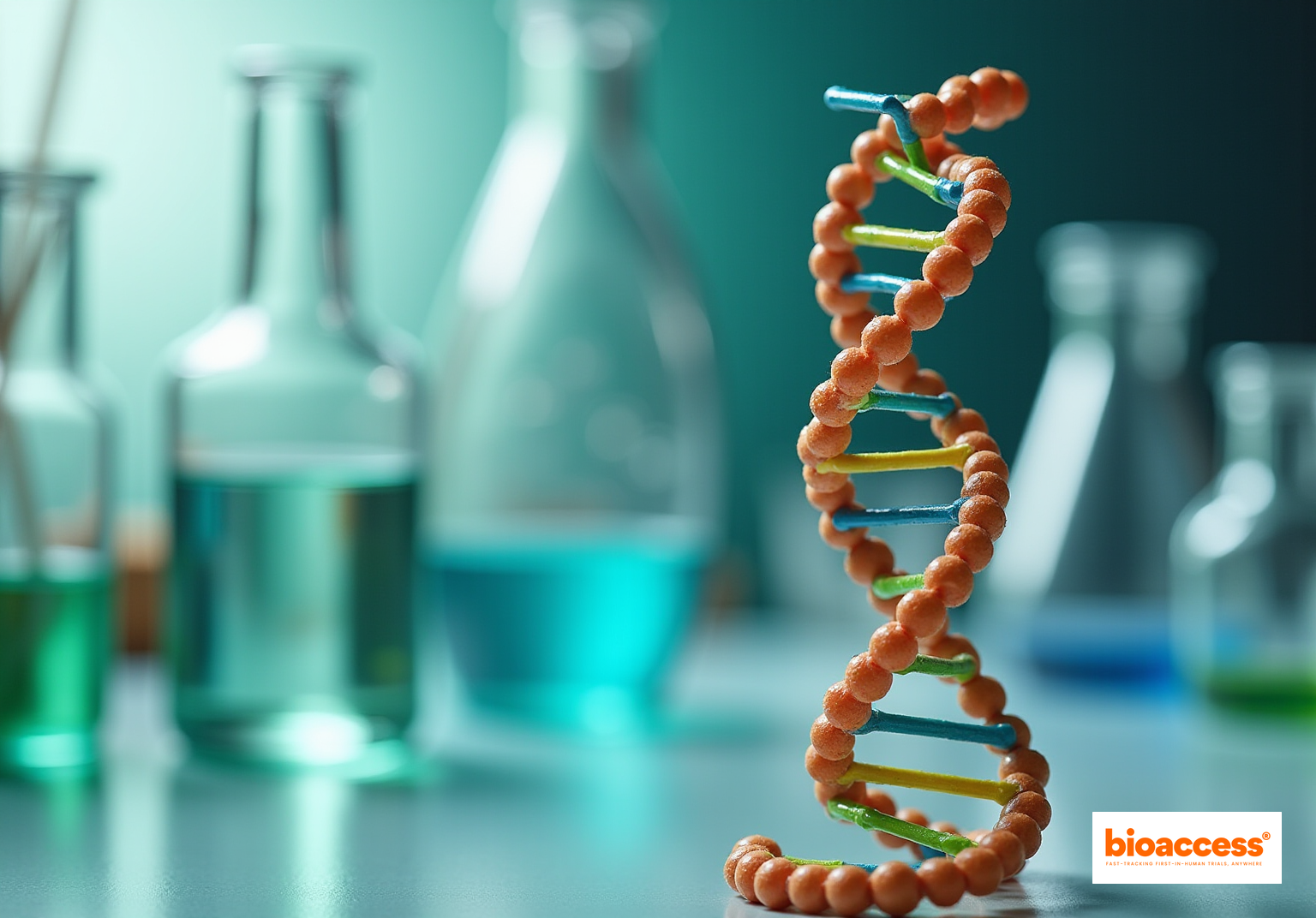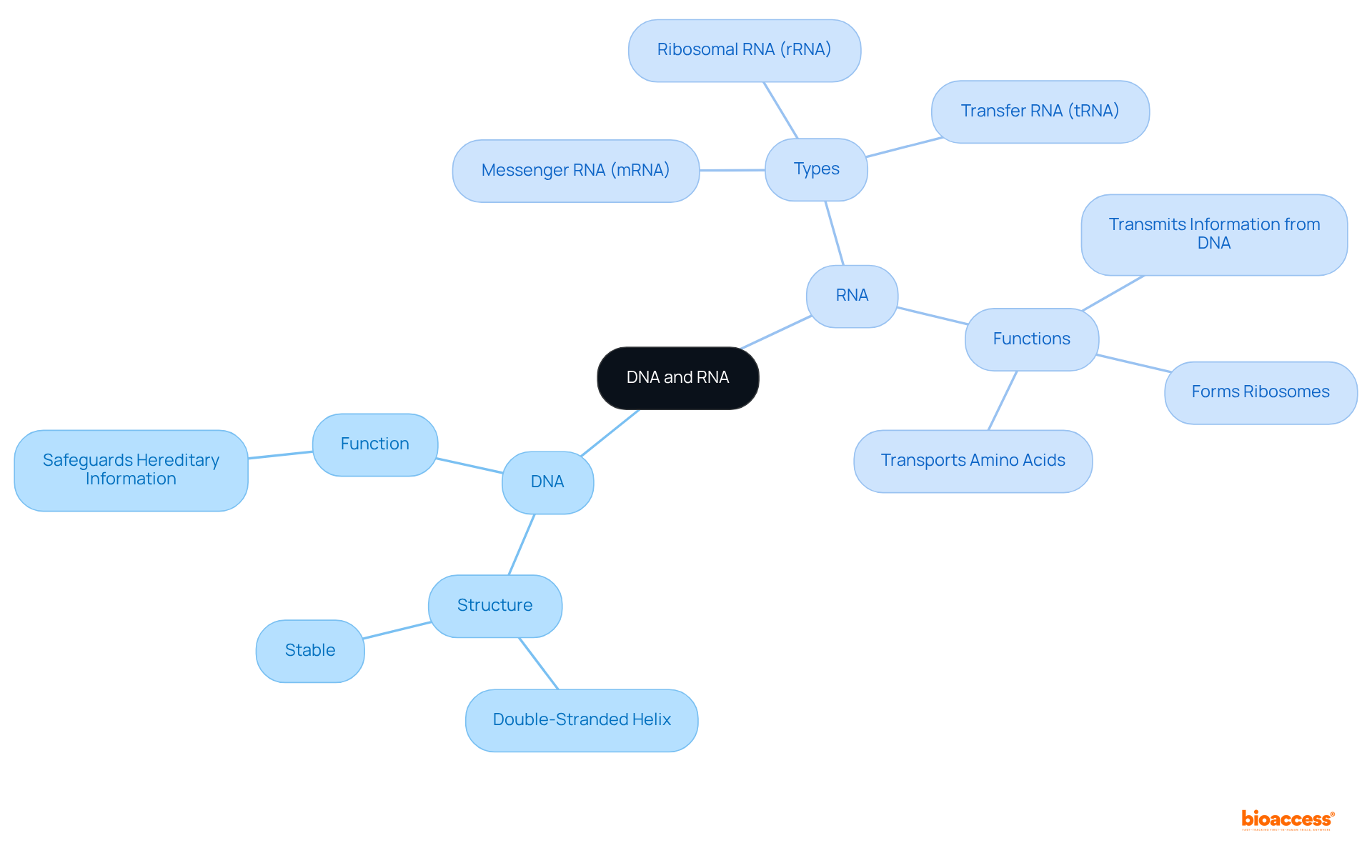


DNA, or deoxyribonucleic acid, serves as the biological blueprint for all living organisms. In contrast, RNA, or ribonucleic acid, primarily functions in translating this genetic information into proteins. This article elucidates their structural differences, historical significance, and various applications in medicine and biotechnology. It illustrates how these molecules are fundamental to heredity and pivotal in driving modern scientific advancements.
Understanding the intricate world of DNA and RNA is crucial; these molecules form the very foundation of life itself. DNA serves as the biological blueprint for all living organisms, while RNA plays an essential role in translating that genetic information into functional proteins. As advancements in biotechnology and medicine continue to unfold, the significance of these molecules becomes increasingly apparent.
How do their distinct structures and functions contribute to groundbreaking applications in fields like personalized medicine and gene editing? This inquiry not only highlights their relevance but also sets the stage for exploring their transformative impact on clinical research.
To understand what are DNA and RNA, it's important to recognize that DNA, or deoxyribonucleic acid, represents the fundamental biological blueprint essential for the development, functioning, growth, and reproduction of all known living organisms. This double-stranded molecule comprises two long strands that form a double helix, with each strand consisting of nucleotides that include:
In contrast, RNA, or ribonucleic acid, is an example of what are DNA and RNA, as it typically exists as a single strand and plays a crucial role in translating the information encoded in DNA into proteins. Unlike DNA, RNA contains ribose sugar and utilizes uracil instead of thymine. Grasping these fundamental concepts is imperative, as they form the foundation of heredity mechanisms and cellular function.

The history of what are DNA and RNA research dates back to the late 19th century. In 1869, Swiss chemist Friedrich Miescher first identified DNA, which he termed 'nuclein,' in the nuclei of human white blood cells. The elucidation of DNA's structure in 1953 by James Watson and Francis Crick, who proposed the double helix model based on X-ray diffraction images taken by Rosalind Franklin, marked a pivotal moment in molecular biology.
Shortly thereafter, the discovery of what are DNA and RNA clarified the role of RNA as a messenger in protein synthesis, particularly in the 1960s. Furthermore, the RNA world hypothesis suggests that what are DNA and RNA may have served as the initial hereditary substance, predating DNA in primitive life forms. Understanding this historical perspective is crucial for appreciating the significance of these molecules in contemporary science.

DNA is defined by its double-stranded helical shape, which not only provides stability but also safeguards hereditary information. Each strand is composed of nucleotides linked by covalent bonds, with complementary base pairing—adenine pairing with thymine and cytosine with guanine—serving to enhance the stability of the double helix.
Conversely, RNA typically exists as a single strand capable of folding into various shapes, enabling it to fulfill diverse functions:
The distinctions in sugar composition—deoxyribose in DNA compared to ribose in RNA—and the replacement of thymine with uracil in RNA further clarify their unique roles in cellular processes. Recent studies indicate that the stability of DNA's phosphodiester bonds is approximately 200 times greater than that of RNA, underscoring DNA's role as a long-term repository for hereditary information.
Furthermore, the folding of RNA into secondary structures can significantly impact its functionality, influencing gene expression regulation and therapeutic applications. Understanding what are DNA and RNA, along with their structural and functional characteristics, is essential for progress in biotechnology and medicine.

DNA and RNA have numerous applications in medicine and biotechnology, underscoring their relevance in clinical research.
These applications highlight the critical role of what are DNA and RNA in advancing healthcare and biotechnological innovations.

The exploration of DNA and RNA reveals their fundamental roles as the building blocks of life and the intricate mechanisms governing biological processes. Understanding the definitions, historical context, structural characteristics, and applications of these molecules not only deepens appreciation for molecular biology but also highlights their significance in modern science and medicine.
Key insights include the historical milestones that shaped our understanding of DNA and RNA, from their initial discovery to the elucidation of their structures. The distinct functional roles of DNA as a long-term repository of genetic information and RNA as a versatile messenger in protein synthesis are crucial for grasping how these molecules operate within living organisms. Furthermore, the applications of DNA and RNA in areas such as personalized medicine, genomic sequencing, and innovative therapies underscore their transformative impact on healthcare and biotechnology.
Recognizing the importance of DNA and RNA extends beyond academic interest; it calls for continued investment in research and technology that harnesses their potential. As advancements unfold, the implications for treating diseases, enhancing agricultural practices, and understanding the complexities of life itself become increasingly profound. Embracing this knowledge empowers individuals and institutions to contribute to a future where the applications of DNA and RNA can lead to groundbreaking discoveries and improved health outcomes.
What is DNA and what is its significance?
DNA, or deoxyribonucleic acid, is the fundamental biological blueprint essential for the development, functioning, growth, and reproduction of all known living organisms. It is a double-stranded molecule that forms a double helix.
What are the components of DNA?
DNA consists of two long strands made up of nucleotides, which include a sugar (deoxyribose), a phosphate group, and nitrogenous bases (adenine, thymine, cytosine, and guanine).
What is RNA and how does it differ from DNA?
RNA, or ribonucleic acid, typically exists as a single strand and plays a crucial role in translating the information encoded in DNA into proteins. Unlike DNA, RNA contains ribose sugar and uses uracil instead of thymine.
Why is understanding DNA and RNA important?
Understanding DNA and RNA is imperative as they form the foundation of heredity mechanisms and cellular function.